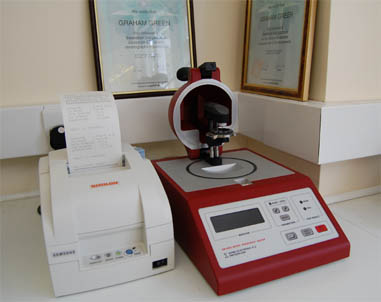A major feature of your traser H3 watch is its water resistance. The degree of water resistance, indicated on the dial or the case back, is generally expressed as a depth in water, e.g. 30, 100 or 200 meters. You may also see this expressed as ATM, an abbreviation for atmospheres -1 ATM or atmospheres equates to 10 meters of water depth.
The following information will help you define the level of water resistance on your traser H3 watch :-
30 metres (3 atm) - Will easily withstand splashes of water and rain but should not be worn for swimming or any water sport activies.
100 metres (10 atm) - Suitable for swimming and snorkelling but should not be worn for Scuba diving.
200 metres (20 atm) - Suitable for all water sport activities and Scuba diving.
Note : The figures quoted refer to static pressure and the actual water pressure on the watch during use will be dramatically higher than the static pressure. For example, when diving into a pool, the pressure is at its greatest at the impact point with the water.
To make sure your watch remains water resistant, please make sure that the crown is fully screwed down after setting the date and time and always before entering any water.
All watches returned for repair relating to water resistance issues, will be tested upon receipt to identify if the watch is up to the manufacturers specification for stated water resistance.

ISO or DIN standards for water resistance state that "to be properly described as water resistant a watch must resist entry of water for 30 minutes at a depth of 1 meter, followed by 90 seconds at 20 meters depth".
This is a purely arbitrary set of parameters and tests are carried out under carefully controlled conditions which bear little resemblance to real life situations. This test is also very impracticable for the watchmaker. Your watch is tested by the "dry" method. The watch is placed in a special chamber where compressed air is pumped to various levels of pressure. This chamber houses a very sensitive gauge which measure how much the watchcase deflects under pressure.
If the water resistance is good it will deflect inwards and remain deflected giving a good result. If the case leaks it will deflect initially but will rapidly return to its "normal" state as the pressure inside the watch equalises with the chamber pressure. The ceramic measuring sensor will detect this change in dimension and indicate a leak thus failing the watch.
After service by us, your watch must pass this test prior to return and we will include the result printout with your returned watch.
Condensation on the inside of the glass is generally an indication that there may be a problem. However, condensation will occur when a warm watch is suddenly exposed to a cold environment i.e. if you enter cold water on a warm day.
In normal circumstances this will appear as a fine mist and will disappear in a minute or so when the watch warms up. This is normal as the air inside your watch will have a small amount of water vapour as is normal humidity in the atmosphere.
If however the misting appears as clearly definable droplets of water and does not clear quickly when warm, then it signifies that water has entered the case. This will NOT evaporate of its own accord and will need to be removed.
There is a high probability that the rest of the inside of the watch is similarly affected. A full overhaul is required as soon as possible to prevent rusting and serious corrosion by the battery which contains some very anti-social characteristics if its power is discharged rapidly through short circuit.
Water damage will generally result in catastrophic damage so before entering water, please ensure that the crown is either pushed in or screwed down (dependent upon the model of your watch) fully to ensure water resistance. Take care not to use extreme force as this can damage the screw thread on screw down crown models.
After swimming or diving in salt water, please rinse your watch in fresh water as soon as possible, If your watch has a rotating bezel, turn the bezel several times whilst rinsing to prevent a build up of salt and corrosion of the bezel ring and O-rings.
Crowns or Chronograph buttons should never be operated whilst the watch is in or under water.
It is not recommended to wear your watch in a hot shower, sauna or hot tub as the extreme temperature causes the metal parts to expand at a different rate to the rubber O-rings, which can allow water droplets to penetrate the watch.
Sudden temperature changes are to be avoided so do not jump into a cold pool after wearing your watch in a hot tub or sauna.
The O-ring seals that prevent water from entering your watch will weaken over time and should be replaced at least every two or three years.
Please ensure that the crown is either pushed in or screwed down (dependent upon the model of your watch) fully before entering water.
If the red Chronograph second hand does not reset to the correct position at 12 O'Clock on your Classic Chrono BD Pro, you will need to zero your Chronograph. This is not a warranty issue and can be easily rectified by following the instructions found in the Ronda 5040.B instruction manual supplied with your watch. Alternatively, click here to open PDF of instructions.